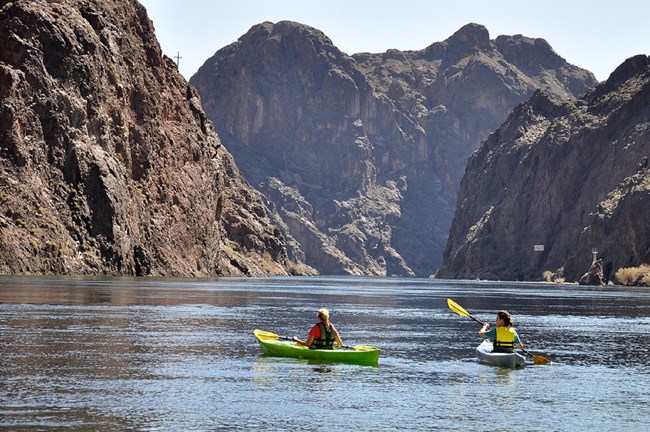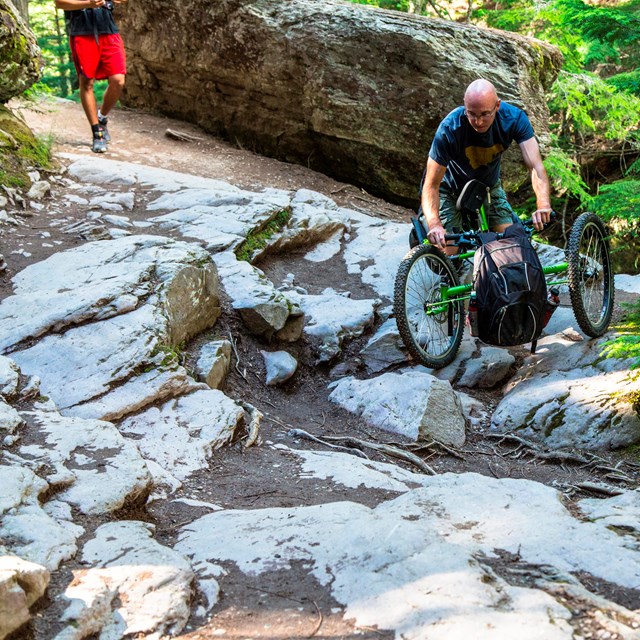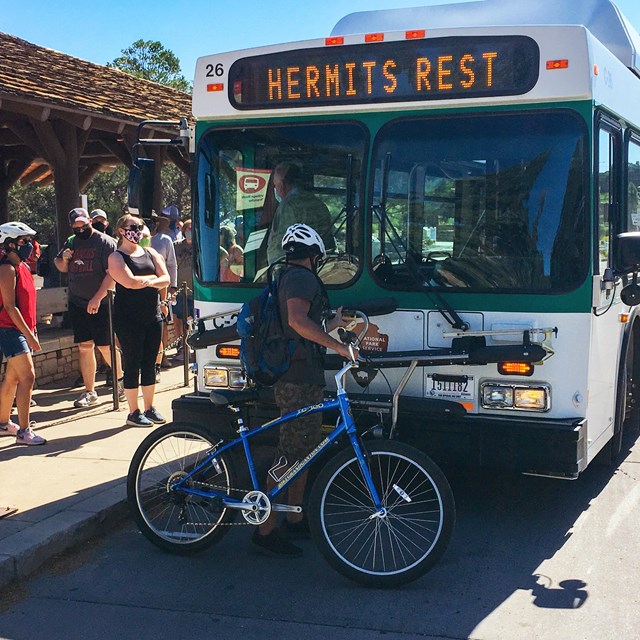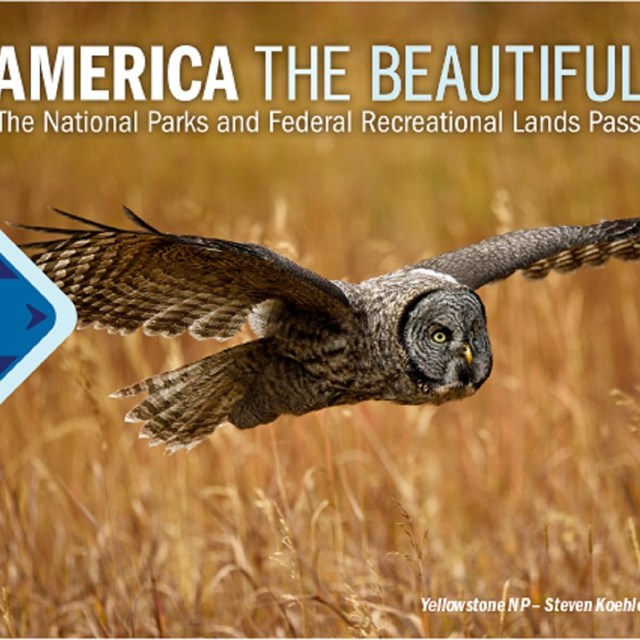
We recognize that planning ahead is crucial step in traveling, recreating and making the most of your visit to our National Parks. We are continually working to bring our websites and general park information up-to-date to better meet all visitors needs. The list below is a rough guide to details that you may find on park websites. Parks are always available to assist with specific questions or concerns regarding your visit.
Note: Parks may have alerts on current park conditions whenever weather or other factors (e.g., construction) has altered accessibility.
Trails and Outdoor Exhibits/Waysides
Parks may provide the following information for their trails and access to their waysides:
-
Any safety concerns visitors should keep in mind. For example, if wildlife might be encountered on a given trail, what should a person who has mobility challenges know to be prepared and safe?
-
Trail characteristics; Surface, minimum and average width, average and maximum slope and cross slope, and trail length. You may only encounter this type of specific trail information on newly constructed trails or more recently altered portions of existing trails connected to designated trailheads or accessible trails.
-
What challenges may exist due to the landscape, high altitude, steep, uneven trails, and extreme and sudden weather changes. Talk to a ranger for suggested hikes and safety recommendations.
-
Some parks have specific Accessibility brochure information, too, with recommended or trail suggestions.
Programs and Tours
Parks offer a variety of educational and participatory programs and tours. Ranger-led programs at some parks are offered throughout the year, and so the season and weather could limit some accessibility. Other parks only offer ranger-led programs during their busy season. Please check our National Event Calendar or visit your individual parks website for current programs offerings
Visitor Centers
The following information may be available about park visitor centers (and other facilities, like restaurants):
-
Parking: How many accessible parking spaces there are and how many are van accessible?
-
Routes: Where are the accessible routes from the parking lot to facilities and are there any barriers that need to be noted?
-
Entrances: Are there automatic or push-button door openers?
-
Restrooms: Where are the accessible restrooms located?
-
Water: Where are accessible water fountains and a water filling stations (for own water bottle) for visitors who us a wheelchair?
-
Transportation: If there are Park shuttle busses, are they accessible for visitors using a wheelchair? Are there bike racks on shuttle busses?
-
Payphone: Is one available and where is it located?
-
Benches: Are there benches provided throughout the visitor center and in outdoors area around the center?
-
Exhibits: Are the exhibits accessible to a person using a wheelchair?
-
Elevator or lift: Is there one if the visitor center is more then one floor?
-
Are wheelchairs or other mobility devices available to borrow?
Campgrounds
The following information may be available regarding park campgrounds. Note that not all national parks have campgrounds.
-
Site Accessibility: General information about how many individual, group and accessible sites. Do these sites have electricity hook-ups? Are the restrooms adjacent and meet accessibility regulations? General description of terrain at the campground, level, vehicle-accessible, and what kind of surface? Is campground registration office wheelchair accessible?
-
Are there accessible picnic tables and/or shelters?
-
Restrooms/showers: A general idea of how many restrooms and showers (if available) throughout the campground are wheelchair-accessible?
-
Amphitheater: What kind of surface and slope is encountered on paths to and from? Is there designated accessible seating?
-
When is the campground registration staffed, in case of questions or if additional help is needed.
Concession Facilities
Concessioners fill a vital role with helping the National Park Service (NPS) carry out its mission. Private companies work with the NPS to offer services to park visitors that parks do not provide directly. Concessioners offer a variety of activities and services in our National Parks from parking facilities and lodging to retail, rental and guide services.
Here is a link that better describes accessibility regulations upon our Concessioners. Inquiring directly with an individual park concession operation will provide more accurate up-to-date information.
-
 Adaptive hikingMobility Devices
Adaptive hikingMobility DevicesLearn about the different types of mobility devices.
-
 Shuttle BusPlan Your Visit
Shuttle BusPlan Your VisitDiscover accessible features in parks and learn more about what we do to provide accessibility across the National Park System.
-
 America the BeautifulInteragency Access Pass
America the BeautifulInteragency Access PassLink to NPS American the Beautiful—National Parks and Federal Recreational Lands Access Pass
Last updated: December 29, 2022
